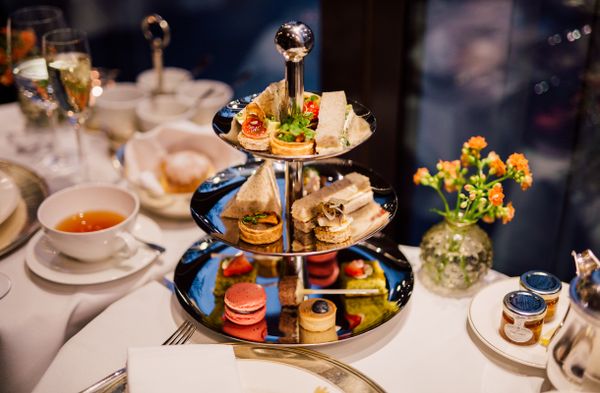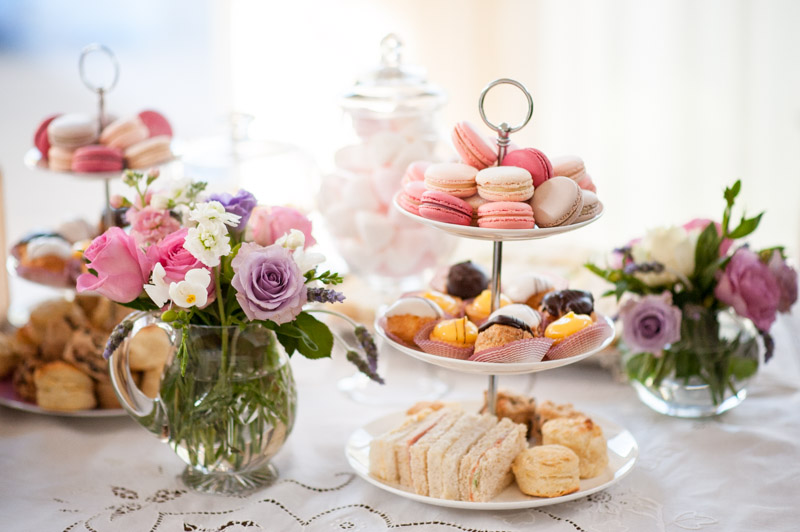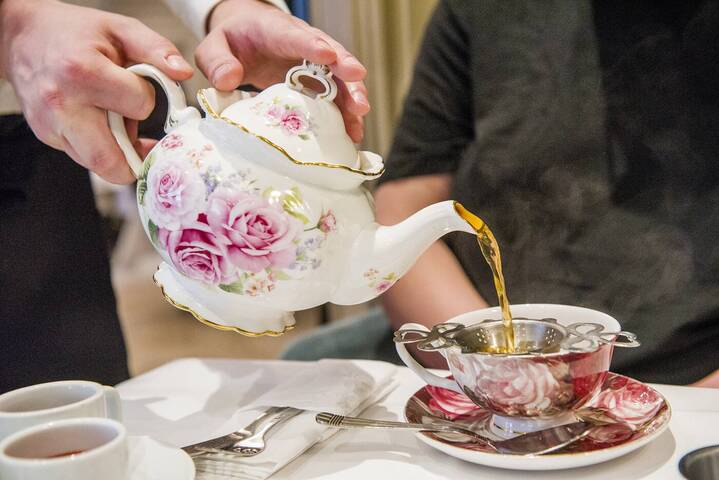How to Make English Tea: Tips for the Perfect Afternoon
Wondering how to make English tea? Some might think that inviting a friend or two over for a tea might require less effort than a dinner invitation, but in Great Britain this isn’t always the case. There are a series of ironclad rules that surround this ritual, which many consider to be more social than culinary in nature.

It seems that the ritual of the English afternoon tea began with the Duchess of Bedford, who first started the custom of having an afternoon snack brought to her room, along with a steaming pot of tea, in order to break up the long wait between noontime lunch and evening’s dinner. Which brings us to the matter of timing: only when served between the hours of 3:30pm and 5pm is tea a proper 'afternoon tea'. Otherwise, it’s called 'high tea' and resembles more of a real meal, with warm dishes served alongside the beverage. During the 1880s, tea became a fashionable social event and society ladies would change into long gowns, gloves and hats for the occasion.
If you still don't know how to make English tea let’s take a look at the rules for the perfect afternoon English tea.
How to make English Tea:
1. Make sure you have all the necessary items
Napkins, a tea pot (better to have two), cups, saucers and a serving tray with at least two levels on which to display the sweet and savoury snacks. The napkins will be smaller than usual, and should be opened fully and spread out on the lap when the tea is served.

2. Heat the water
The tea pot should always be warmed (rinsing it out with hot water), which ensures that the porcelain doesn’t undergo a 'shock' when the boiling water is poured into it, which may lead to cracking.

3. Add the tea leaves
Calculate a teaspoon of leaves for each guest, plus one more 'for the pot'. The boiling water should be poured straight over the leaves. If you place the tea leaves directly in the pot, you’ll need to use a filter over each cup. If instead, you don’t want the leaves to keep infusing in the hot water, you should use a tea 'ball'. Infusion times vary from 3 to 5 minutes. True tea connoisseurs will have more than one pot: one for Indian black teas, one for Chinese green teas, one for aromatic teas, etc. Normally, two will suffice when serving: one for the tea and another for the hot water (although a kettle will do) when the tea gets too strong.
4. Milk or lemon?

Most Brits take tea with milk, a habit that originated from the fact that a drop of cold milk in the teacup prevented the dark, boiling tea to crack or stain the delicate porcelain. With today’s cups, you can safely pour the milk in afterwards. Sugar should be present in cubes or crystals, white and dark, and you should also provide honey or sweeteners.
5. Savoury or sweet
Tea should be served with both savoury and sweet snacks. There should be sandwiches, scones, pastries and cakes—served in this order: Savoury (finger sandwiches with various fillings); neutral (scones, crumpets, buns); sweet (cakes, biscuits, pastries). It’s fundamental to serve each item in bite-sized portions, as tea should be consumed without cutlery.

6. Etiquette

The host or hostess can share the job of pouring the tea with close friends, but he or she should always pour the first cup. Good form dictates that the plate should be raised with the left hand, while the teacup should be held with the right hand. And watch those pinky fingers: they should be aligned with the other fingers.
How to make English tea: the Don'ts
1. Don’t use tea bags instead of loose tea
2. Don’t pour water when it’s scalding
The leaves will be burned and the flavour, ruined.
3. Don’t let the tea infuse for too long in the teapot
4. Don’t stir the tea when it’s in the teapot or the cup
Place the teaspoon at the '6 o’clock' position, and then gently move i
Use the special sugar tongs. t to the '12 o’clock' position a couple of times. When done, place the teaspoon on the right side of the saucer.
5. Don’t take the sugar cubes with your fingers.
6. Don’t lift your pinky finger when you raise the teacup.
7. Don’t leave the slice of lemon in the cup as you sip your tea.
It should be removed beforehand.
8. Don’t prepare the sandwiches too far in advance
30 minutes is enough time: if you prepare them earlier they’ll look old and wilted.
For your reference, here’s a small chart with infusion times for the most common teas.
- Assam, Ceylon, Darjeeling Black Tea: 3-5 minutes
These full-bodied dark teas are grown in the Indian subcontinent and produce some wonderful blends when combined.
- Chinese, Keemun, Yunnan or Szechwan Black Tea: 3-4 minutes
These teas are mostly grown in China’s southern provinces and are made from completely oxidised tea leaves.
- Chinese Green Tea (Lung Ching, Pi lo chun): 4-6 minutes
Green tea is used in traditional Chinese medicine to aid digestion, improve heart health and regulate body temperature.
- Japanese Green Tea (Sencha, Bencha, Gyokuro): 1-3 minutes
One of the healthiest drinks in the world, matcha is believed to have carcinogenic properties.
- Oolong Tea: 1-7 minutes
Oolong tea is semi-oxidised, meaning it contains both green and black tea compounds.
Loose Tea in L's Place
Afternoon tea accompaniments

There are plenty of other bite-sized accompaniments to afternoon tea that will make a change from finger sandwiches. Savoury or sweet scones, for example, traditionally served with jam and cream but versatile enough to lend themselves to plenty of different flavours. The only limit is your imagination.




